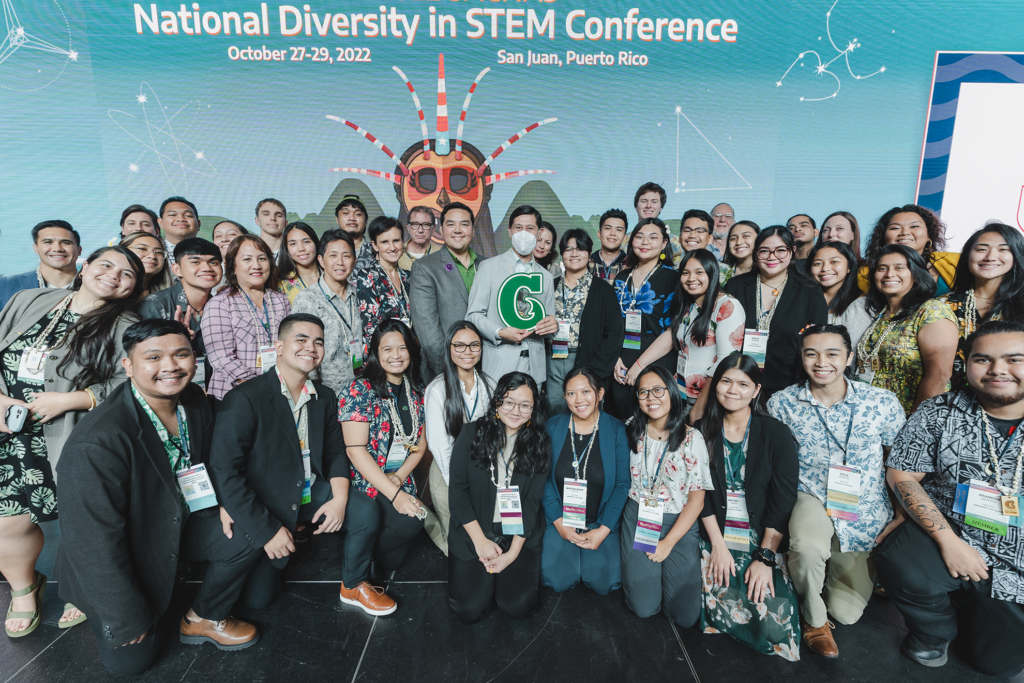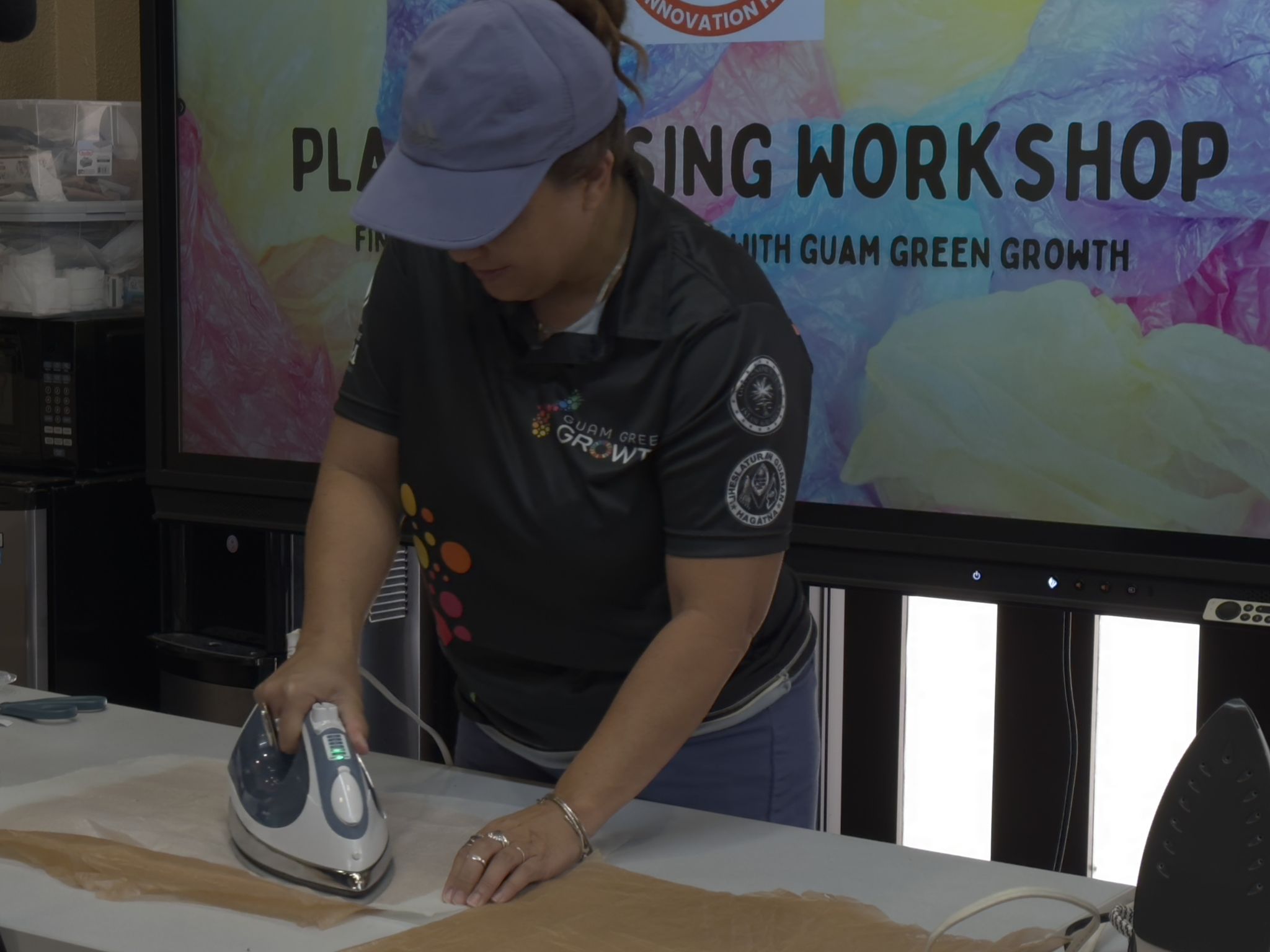





The UOG SACNAS Student Chapter received the award at this year’s SACNAS National Diversity in STEM (NDiSTEM) Conference. The event, a cornerstone in fostering diversity in Science, Technology, Engineering, and Mathematics (STEM), took place in Portland, Oregon.
A total of 48 attendees from UOG participated in NDiSTEM, which stands as the largest multidisciplinary and multicultural STEM diversity event in the United States.
UOG President Anita Borja-Enriquez, DBA, a member of the conference delegation, said, “UOG takes immense pride in our presence at the SACNAS NDiSTEM Conference. This gathering not only strengthens our commitment to fostering inclusivity but also emphasizes the vital role of diverse perspectives in shaping the future of science and innovation.”
Throughout the conference, participants actively attended workshops, showcased their research, and established connections with officials from academia and industry nationwide, creating valuable research and career opportunities.
Another significant achievement was the significant number of student presenters from the UOG delegation. Eighteen student attendees from Guam, representing nearly half of the total UOG delegation, delivered presentations at the conference.
18 students from Guam presented their research and took home these awards:
Co-principle investigator for Education and Workforce Development for Guam NSF EPSCoR, Austin Shelton, PhD, also participated in the conference. He is currently an elected member of the SACNAS National Board of Directors and serves as the faculty co-advisor, along with UOG Associate Professor Cheryl Sangueza, for the UOG SACNAS Student Chapter.
“As we immerse ourselves in the vibrant atmosphere of learning and collaboration at the SACNAS NDiSTEM conference, we are not just attendees; we are catalysts for a more inclusive and equitable future in science. Our presence echoes our university’s dedication to shaping a world where opportunities in STEM are accessible to everyone,” Shelton said.
Britney Sison, president of the UOG SACNAS Student Chapter, said, “I am extremely proud and humbled that SACNAS UOG has received the award. It is a testament to the hard work and dedication of our current as well as previous leaders, members, and advisors who laid a strong foundation for our organization.”
Sison added, “This award means a lot to us, and I hope it inspires future students to continue the mission of SACNAS – to support underrepresented groups in their pursuit of degrees and careers in STEM and to encourage others to bring their culture and whole selves into the process.”
Meanwhile, Sabrina Zhi, vice president of the UOG SACNAS Student Chapter, said the award demonstrates collective support from many past and present UOG students to highlight their resilient attitude towards the advancement of representation for the Pacific Island community. “I hope through this award, SACNAS UOG can continue to inspire and support future generations of Guamanian STEM-ists, as it has done for me,” Zhi said.
Celebrating its 50th year, SACNAS fosters the success of underrepresented Americans – from college students to professionals – in attaining advanced degrees, careers, and leadership positions in STEM. It is the largest multicultural and multidisciplinary STEM diversity organization in the United States, serving more than 20,000 students and professionals.
The attendees participated in the conference through support provided by the Guam NSF EPSCoR and NSF INCLUDES SEAS grants and travel scholarships from SACNAS, Chapter Officer Leadership October Retreat (COLOR), and the Research Corporation of the University of Guam.

























